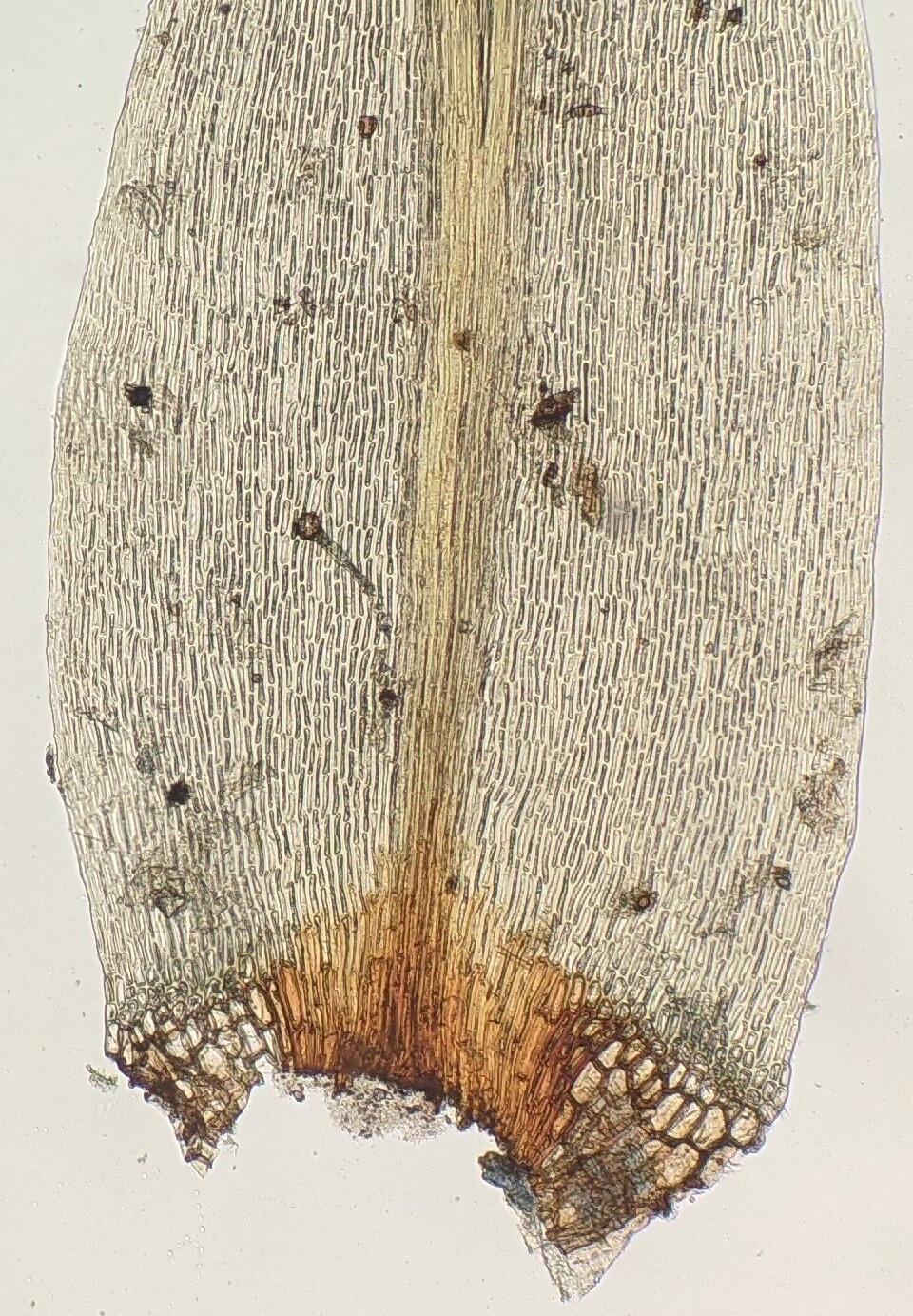Blindia magellanica
Schimp. ex Müll.Hal.Dioicous. Mats on rocks, gold-green or yellow-green, glossy. Stems branched by innovation and forking, c. 5–40 mm long. Leaves similar when moist and dry, secund to ±falcate-secund, occasionally nearly straight, subulate from an ovate or ovate-lanceolate base, (2–) 3–5 mm long, with subula 1–1.5 times the length of base, subtubulose in basal half; apex narrowly acute or rarely ±rounded; costa excurrent; margin entire toward base, crenulate or denticulate at apex, plane; laminal cells in apical half linear, c. (21–) 45–60 μm long, 3–4 μm wide; basal laminal cells linear, 30–55 μm long, 5–7 μm wide; alar cells inflated, 10–30 μm long, 12–18 μm wide, orange or hyaline, forming a distinct group extending c. 4 cells up leaf. Seta mostly 4–5 mm long, twisted to the right. Capsules broadly urceolate when dry, broadly obovoid to globose when moist, 0.7–0.8 mm long, yellow-brown. Operculum oblique-rostrate from weakly conic base, c. 1/2–2/3 capsule length.
GipP, HSF, HNF, OtR, VAlp. Mostly recorded from streams on the Baw Baw Plateau, but also elsewhere at high altitude (e.g. Bogong High Plains) and occasionally in stream among wet forest at low altitude (e.g. the Otways). Also NSW, ACT and Tas. New Zealand, New Guinea, Lesotho, Subantarctic Islands, Tristan da Cunha, Brazil and the Andes of South America.
 Spinning
Spinning
